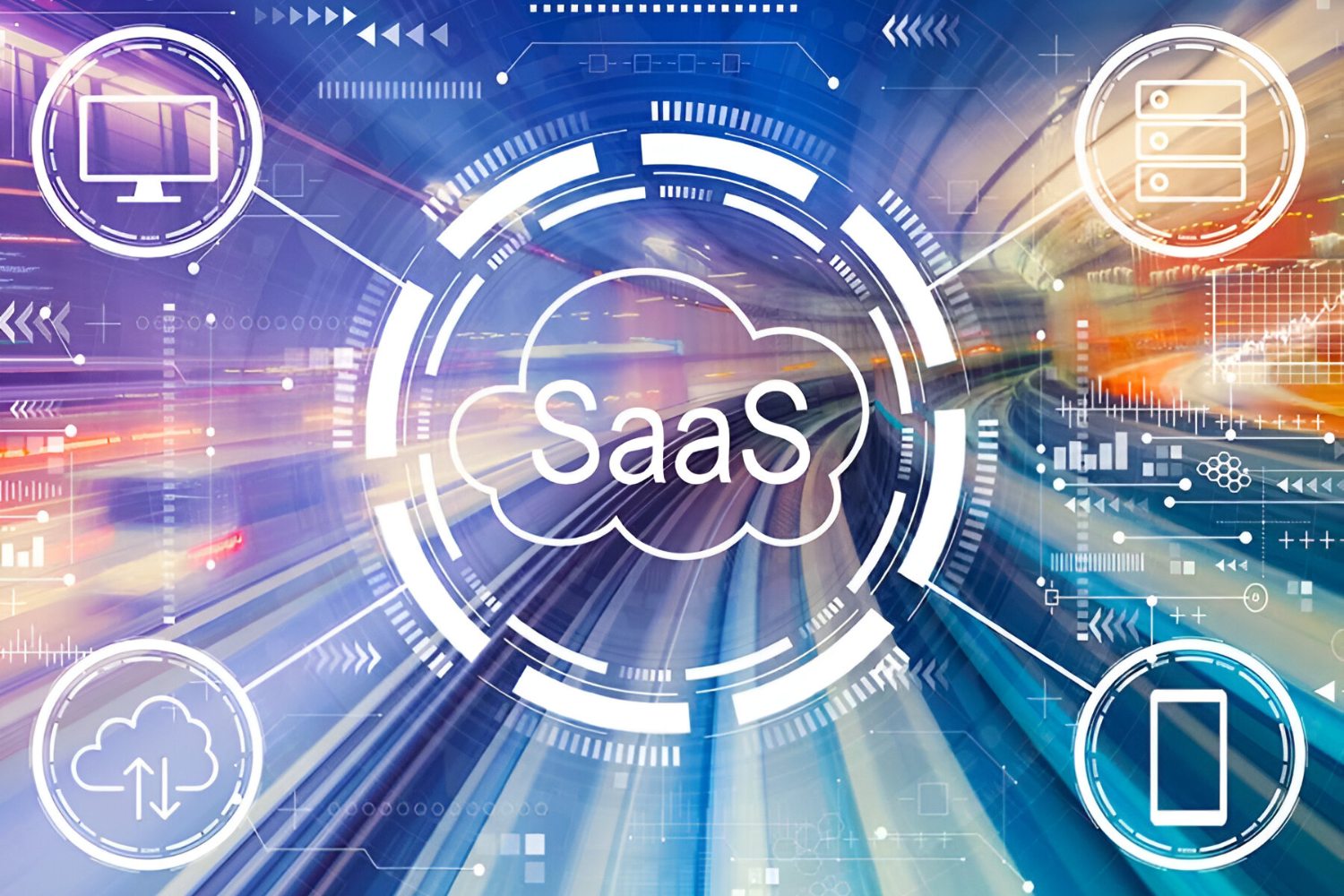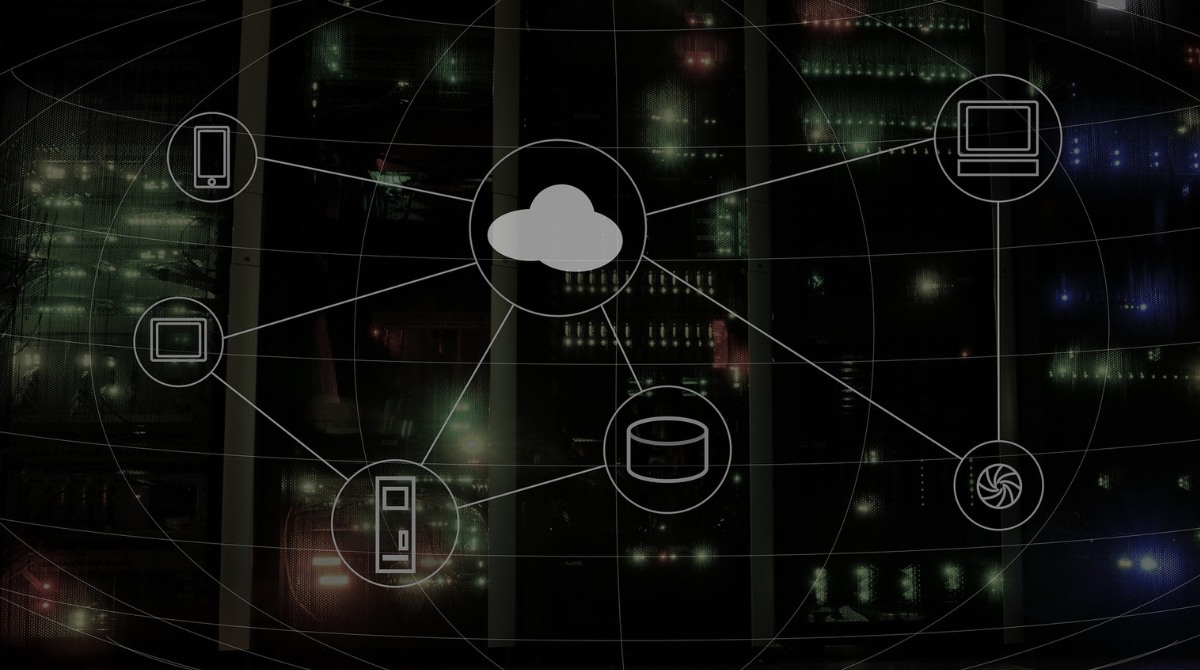Introduction
Welcome to the fascinating world of Software-as-a-Service (SaaS). In today’s digital age, SaaS has become an integral part of our lives, powering everything from communication and collaboration tools to customer relationship management systems. But have you ever wondered when SaaS was first invented and how it has evolved over time?
SaaS, in simple terms, refers to a software delivery model where applications are hosted on a remote server and accessed over the internet. Instead of purchasing and installing software on individual computers, users can subscribe to SaaS offerings and access the software through their web browsers. This convenient and cost-effective approach has revolutionized the software industry, providing businesses and individuals with access to powerful tools without the need for complex infrastructure.
The concept of delivering software over the internet may seem like a modern phenomenon, but the roots of SaaS can be traced back several decades. Early pioneers of SaaS recognized the potential of remote software delivery and laid the groundwork for what we now know as SaaS.
Definition of SaaS
Before we delve into the history and evolution of SaaS, it’s essential to have a clear understanding of what SaaS actually means. As mentioned earlier, SaaS, which stands for Software-as-a-Service, is a software delivery model that allows users to access applications hosted on remote servers via the internet.
Unlike traditional software installations where users had to purchase and install the software on their own devices, SaaS offers a subscription-based model. This means that users can access the software on-demand, paying a regular subscription fee to access and utilize the application’s functionalities.
One of the key advantages of SaaS is that it eliminates the need for costly infrastructure, as all the software and data are stored and maintained by the SaaS provider. This not only simplifies software management for users but also allows them to access applications from any web-enabled device, at any time and from anywhere in the world.
SaaS providers take care of software updates, backups, and security, relieving users of the burden of maintaining and managing their own software. This significantly reduces the IT costs associated with traditional software installations and enables businesses to focus on their core competencies.
Furthermore, the SaaS model offers scalability, giving users the flexibility to easily scale up or down their software usage based on their needs. This means that businesses can quickly adapt their software requirements as they grow or face changes in demand.
Overall, the SaaS model has revolutionized the way software is delivered and accessed. It has democratized access to powerful tools and applications, making them more affordable and accessible to businesses of all sizes. Now that we have a clear understanding of what SaaS is, let’s explore the early pioneers who paved the way for this revolutionary software delivery model.
Early Pioneers of SaaS
The roots of SaaS can be traced back to the 1960s when mainframe computers were the primary computing infrastructure. During this time, companies like IBM pioneered the concept of time-sharing systems, where multiple users could access a single mainframe computer simultaneously. This laid the foundation for the idea of centralized software delivery.
In the 1990s, as the internet became more widely available, a few companies started experimenting with the idea of delivering software applications over the internet. One notable pioneer was Salesforce, founded in 1999 by Marc Benioff. Salesforce introduced the first cloud-based CRM system, shifting the focus from on-premises software installations to a subscription-based cloud model.
Another early pioneer was NetSuite, founded by Evan Goldberg in 1998. NetSuite offered an integrated suite of business applications, including accounting, ERP, CRM, and e-commerce, all delivered through the internet. This marked a significant step towards the adoption of SaaS as a viable software delivery model.
These early pioneers faced significant challenges, both technologically and in terms of market acceptance. The concept of hosting and accessing software over the internet was still relatively new, and businesses were hesitant to trust their valuable data to external servers. However, as the internet infrastructure improved and security measures became more robust, the potential benefits of SaaS started gaining recognition.
One of the key factors that contributed to the success of these early pioneers was their focus on providing value-added benefits to their customers. SaaS companies offered not only the convenience of remote software access but also incorporated features like automatic updates, seamless integration, and scalability. This added value created a compelling proposition for businesses, further driving the adoption of SaaS.
As SaaS gained traction and more players entered the market, the concept continued to evolve, addressing diverse industry needs and niches. Today, SaaS has become a thriving industry, with countless companies offering a wide range of software solutions for businesses of all sizes and industries.
Now that we’ve explored the early pioneers of SaaS and their contributions, let’s dive into the journey of SaaS and how it has evolved over time.
Evolution of SaaS
Over the years, SaaS has undergone significant evolution, adapting to changing technological landscapes and market demands. The evolution of SaaS can be categorized into several distinct phases, each marked by advancements in technology and shifts in customer preferences.
The initial phase of SaaS was marked by the emergence of cloud-based solutions in the late 1990s and early 2000s. As internet connectivity and infrastructure improved, companies began migrating their software applications to remote servers, enabling users to access them through web browsers. This shift paved the way for the proliferation of SaaS offerings across various industries.
The next phase in the evolution of SaaS was characterized by the rise of mobile devices and the increasing demand for anytime, anywhere access to software applications. SaaS providers began developing mobile-friendly interfaces and native mobile apps, allowing users to access their software on smartphones and tablets. This mobile-centric approach further enhanced the flexibility and convenience of SaaS.
As data security became a growing concern, SaaS providers also prioritized strengthening their security measures. The implementation of robust encryption, multi-factor authentication, and compliance with industry regulations reassured businesses about the safety and confidentiality of their data on remote servers. Trust in SaaS solutions grew as security measures continued to improve.
Another significant development in the evolution of SaaS was the increasing emphasis on customization and integration. SaaS providers started offering flexible and customizable software solutions that could be tailored to meet the specific needs of different businesses. Additionally, integration capabilities became crucial as businesses sought to connect their SaaS applications with existing systems and workflows.
Artificial intelligence (AI) and machine learning (ML) have also played a role in the evolution of SaaS. SaaS providers began leveraging AI and ML technologies to enhance the functionality and performance of their applications. From intelligent data analytics to automated workflows, AI-powered SaaS solutions offer advanced capabilities that help businesses make better-informed decisions and streamline their operations.
Moreover, the advent of microservices architecture has facilitated the development of modular and scalable SaaS applications. By breaking down software into smaller, independent components, SaaS providers can quickly add new features and functionalities without disrupting the entire application. This agility has allowed businesses to stay ahead in a rapidly evolving technological landscape.
As we progress into the future, SaaS is expected to continue evolving and adapting to meet the ever-changing needs and expectations of businesses and users. The seamless integration of emerging technologies like Internet of Things (IoT), virtual reality (VR), and blockchain is likely to reshape the SaaS landscape, unlocking new possibilities and opportunities.
Now that we’ve explored the evolution of SaaS, let’s discuss some key milestones in its development.
Key Milestones in the Development of SaaS
The development of SaaS has been marked by several key milestones that have shaped the industry and propelled its growth. These milestones highlight the significant advancements and breakthroughs in the evolution of SaaS technology. Let’s explore some of the most important milestones in the development of SaaS:
1. Emergence of Salesforce: The launch of Salesforce in 1999 revolutionized the CRM (Customer Relationship Management) industry. Salesforce introduced the concept of cloud-based CRM, showcasing the potential of SaaS and paving the way for other cloud-based software solutions across various domains.
2. Rapid Growth of Cloud Infrastructure: The expansion of cloud infrastructure and the availability of robust hosting platforms, such as Amazon Web Services (AWS) and Microsoft Azure, provided the foundation for the scalable and secure delivery of SaaS applications. Businesses could now rely on reliable cloud-based infrastructure to house their SaaS solutions.
3. Advancements in Mobile Technology: The exponential growth of smartphones and mobile devices led to a significant shift in user behavior and expectations. SaaS providers quickly recognized the importance of mobile access and developed mobile-friendly interfaces and native apps, allowing users to access their software on the go.
4. Rise of Collaboration Tools: Collaborative platforms like Google Workspace (formerly G Suite) and Microsoft Office 365 brought powerful productivity tools to the cloud. These platforms allowed users to create, share, and collaborate on documents, spreadsheets, and presentations in real-time, fostering remote collaboration and redefining the way teams work together.
5. Integration Capabilities: Integration became a critical component of the SaaS landscape as businesses sought to connect their SaaS applications with other systems and workflows. The development of robust APIs (Application Programming Interfaces) and integration platforms like Zapier and Workato made it easier to connect and automate processes across different SaaS tools.
6. Expansion into Enterprise Applications: Initially, SaaS was primarily focused on small to mid-sized businesses. However, with advancements in technology and security, SaaS providers started offering enterprise-grade solutions, addressing the unique needs and requirements of large organizations. This expansion into the enterprise market garnered wider adoption and acceptance of SaaS.
7. Integration of Artificial Intelligence and Machine Learning: The integration of AI and ML technologies into SaaS applications has brought advanced analytics, predictive capabilities, and automation to the forefront. SaaS providers can now offer intelligent insights, personalized experiences, and automated workflows, empowering businesses to make data-driven decisions and streamline their operations.
These milestones have played a significant role in shaping the SaaS industry, propelling its growth, and changing the way businesses acquire and utilize software. As technology continues to advance, we can anticipate even more milestones in the future, revolutionizing the SaaS landscape and ushering in new possibilities.
Current State of SaaS
The SaaS industry has witnessed tremendous growth and is now an integral part of the software landscape. Its current state is characterized by a wide range of offerings, an expanding customer base, and continuous innovation. Let’s delve into the key aspects that define the current state of SaaS:
1. Diverse Software Offerings: SaaS now encompasses a vast array of software applications, ranging from productivity tools and customer management systems to marketing automation platforms and human resources management software. Businesses can find SaaS solutions tailored to their specific needs across various industries.
2. Increased Market Penetration: SaaS has gained significant traction across businesses of all sizes. From startups and small businesses to large enterprises, companies are leveraging SaaS to streamline processes, increase efficiency, and drive growth. The accessibility and affordability of SaaS solutions have contributed to its widespread adoption.
3. Global Accessibility: One of the key strengths of SaaS is its ability to provide software access from anywhere in the world, as long as there is an internet connection. This global accessibility has fueled the growth of distributed and remote teams, enabling seamless collaboration and fostering a more flexible work environment.
4. Subscription-Based Model: The subscription-based model remains a cornerstone of SaaS. Businesses can choose from various pricing plans and subscription tiers that align with their usage and requirements. This model provides greater flexibility, as customers can scale their software usage up or down based on their needs.
5. Continuous Innovation: SaaS providers are constantly focused on improving their offerings and introducing new features to stay competitive. The industry is driven by continuous innovation, with providers integrating emerging technologies like AI, ML, IoT, and blockchain into their applications to deliver enhanced functionality and value to customers.
6. Security and Data Privacy: With the increasing importance of data security and privacy, SaaS providers have made significant investments in implementing robust security measures. Encryption, multi-factor authentication, and compliance with data protection regulations have become standard practices, helping businesses trust and rely on SaaS solutions for their critical data.
7. Integration Ecosystems: SaaS solutions are designed to integrate seamlessly with other applications and systems. Integration capabilities have become a key differentiator, as businesses aim to connect their SaaS tools and create cohesive workflows. Integration platforms and APIs enable businesses to leverage the full potential of SaaS through integrated and automated processes.
8. Vertical-Specific Solutions: SaaS providers are increasingly creating industry-specific solutions to cater to the unique requirements of various sectors such as healthcare, finance, and retail. These vertical-specific solutions offer tailored features, compliance with industry regulations, and specialized functionalities that address the specific needs of businesses within those sectors.
Overall, the current state of SaaS is characterized by an expanding ecosystem of diverse software offerings, widespread adoption across businesses of all sizes, technological advancements, and a focus on delivering value and convenience to customers. As the SaaS industry continues to evolve, we can expect further innovation, improved integration capabilities, and the integration of emerging technologies to drive the future of SaaS.
Conclusion
The journey of Software-as-a-Service (SaaS) has been remarkable, transforming the way software is accessed, delivered, and utilized. From its early beginnings with pioneers like Salesforce and NetSuite, SaaS has evolved into a thriving industry that caters to the diverse software needs of businesses worldwide.
With its subscription-based model, SaaS has democratized access to powerful software applications, allowing businesses of all sizes to leverage sophisticated tools without hefty upfront investments. The ability to access software from any web-enabled device has further facilitated remote work, collaboration, and flexibility.
The development of SaaS has been marked by key milestones, including the emergence of cloud infrastructure, advancements in mobile technology, and the integration of artificial intelligence and machine learning. These milestones have shaped the industry, driving innovation and expanding the possibilities of what SaaS can offer.
The current state of SaaS is characterized by diverse software offerings, widespread adoption across businesses, and a constant drive for innovation. The subscription-based pricing model, global accessibility, and continuous development of integration ecosystems have solidified SaaS as a go-to choice for organizations seeking efficient and scalable software solutions.
Furthermore, the emphasis on data security, compliance with regulations, and the vertical-specific solutions offered by SaaS providers have addressed the unique requirements of various industries, fostering trust and confidence among businesses.
Looking ahead, SaaS is poised for further growth and innovation. As new technologies like the Internet of Things (IoT), virtual reality (VR), and blockchain continue to mature, we can expect SaaS providers to incorporate these advancements into their offerings, unlocking new possibilities and enhancing value for customers.
In conclusion, Software-as-a-Service has come a long way since its inception, shaping the software industry and revolutionizing the way businesses acquire and utilize software applications. With its flexibility, accessibility, and continuous innovation, SaaS remains a key driver in the digital transformation of businesses, enabling them to remain agile, competitive, and poised for future growth.

























